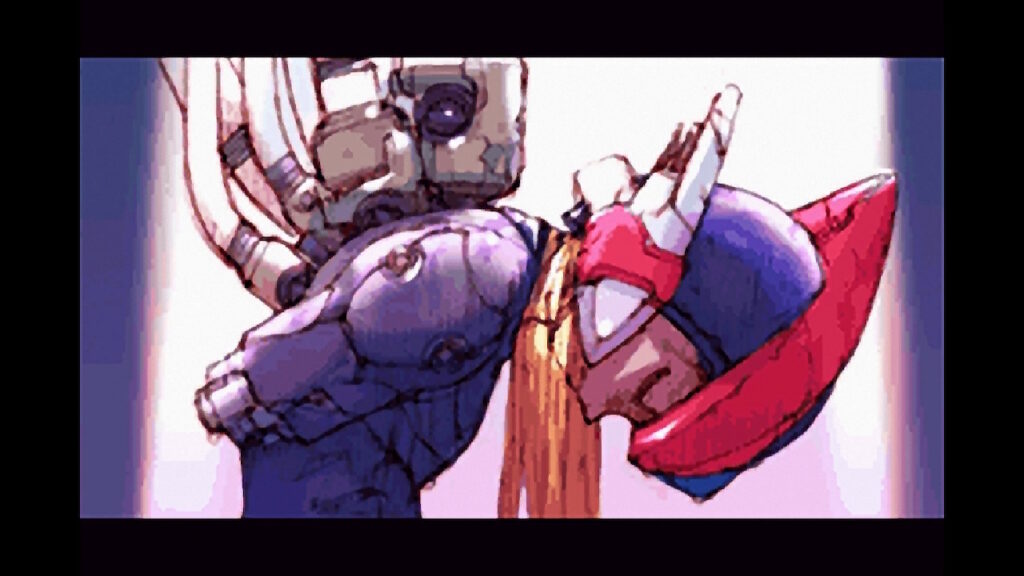
The Mega Man series a staple of gaming. The franchise has been around since the late 1980s, with around 50 games which have remained consistent, delivering solid 2D running and gunning. In 1994, there was Mega Man X on the Super Nintendo, the successor to the original (still) ongoing series. From the X series, spun off a new franchise on the Gameboy Advance; Mega Man Zero.
Throughout the 2000s, Capcom had Inti Creates shepard all four Zero games and their successors; Mega Man ZX and Mega Man ZX Advent. To this day, the 2D style of action platformer seen in most Mega Man games is Inti Creates’ bread and butter.
They never stopped producing this kind of action with recent hits like both Azure Striker Gunvolt titles proving that they have always have had what it takes.
With six games in this compilation, which of them are winners and stinkers? For anyone going in with no prior experience, they will be pleased to discover that everything in this collection is well worth their time. With the inclusion of a few difficulty modifiers, even grandma can get in on the action.
Mega Man Zero/ZX Legacy Collection
Developer: Inti Creates
Producer: Capcom
Platforms: Windows PC, Nintendo Switch (reviewed), PlayStation 4, Xbox One
Release Date: February 25, 2020
Players: 1
Price: $29.99
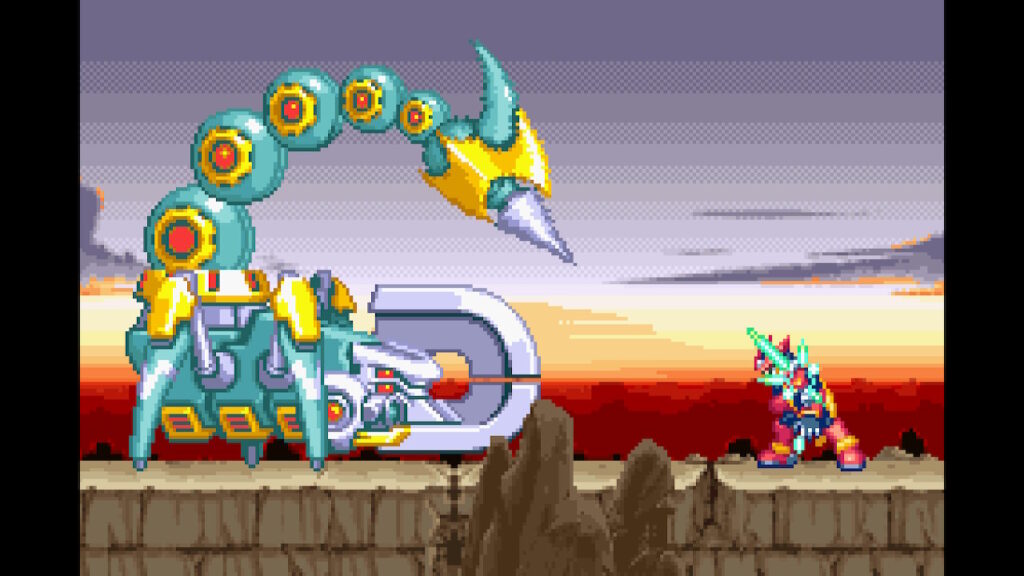
Inti Creates was tasked with continuing the Mega Man X series with Zero. They would ultimately distinguish this new line of action games by taking the Mega Man formula and introducing some Metroidvania elements. The idea was to make the setting more fleshed out and connected, while also bringing the narrative to the forefront.
Not everyone cares about the story in Mega Man. It is a fair argument that it is secondary to the experience and for a long time it was. As the X games continued, the story often get in the way of the action. The frequent interruptions of text boxes or voice acting became infamous in later entries.
Thankfully, Inti Creates managed to find a way to make the entries in the Zero/ZX Legacy Collection have an even greater emphasis on narrative while not being a nuisance.
In the Zero games, you typically are dropped in a large hub-like area that is connected to the main locations were much of the action occurs. Zero is not usually required to go out and venture from the hub, instead he picks his missions from Ciel’s to-do list. Aside from only having a few choices at any given time, the structure is not that much different from picking a level from the boss selection screen.
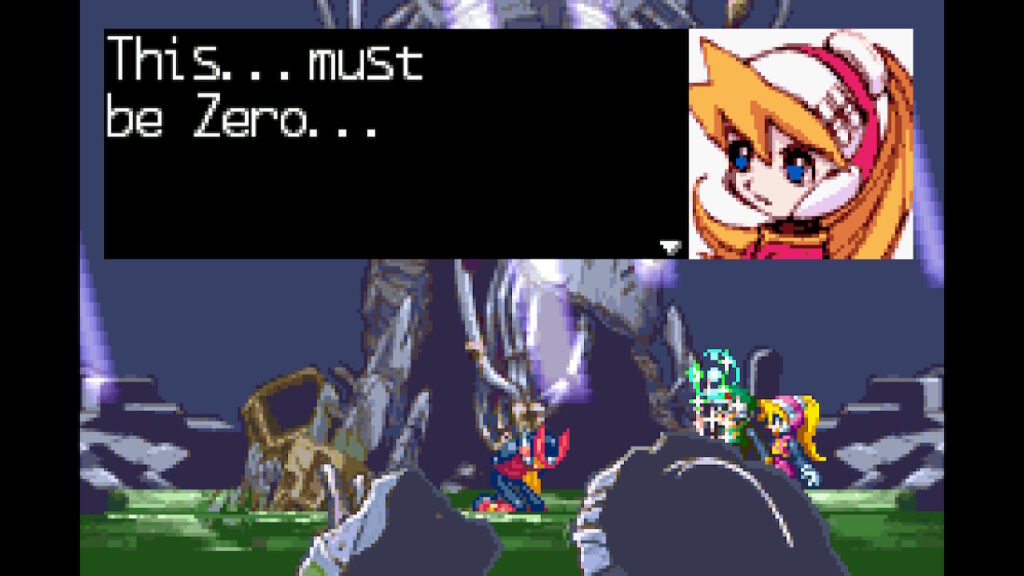
It is a half-hearted attempt to add some nonlinearity, because it seems like it would have been more fulfilling discovering the mission as you explored, instead of picking it off a list. The reason why Inti Creates would use this means to unfold the action is to allow the story to play out without interruptions.
Anyone who played Mega Man X5, X6, and on would tell you just how egregious the dialogue interruptions could get. Mega Man Zero 1-4, typically book ends every mission with a brief cutscene or maybe a small dialogue exchange. The fluid exploration may have been sacrificed for a more deftly told story, but what a story it is…
Things are much darker than they have ever been in a Mega Man game with the four Zero titles. Years have passed since the events of the X saga, and all-out war has turned the world into a robot post apocalypse. Zero is reawakened to defend the reploids from a tyrannical totalitarian regime.
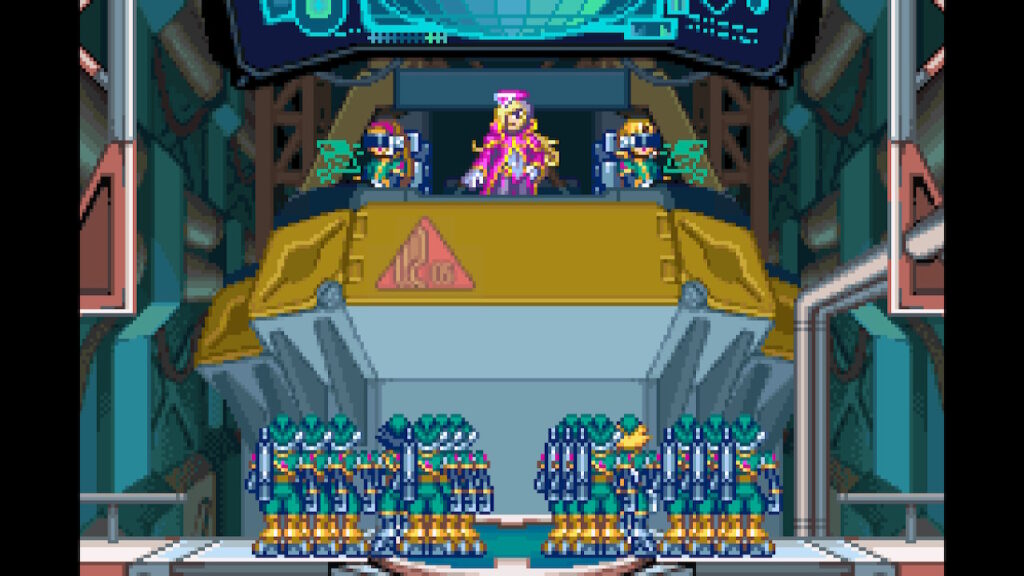
Throughout the tetralogy of Zero, the protagonist ends up joining a rebellion, and will even confront old enemies from his past. It is all very shonen-anime, with elements of Casshern with the tone taking itself seriously. This is the most bleak and edgy Mega Man has been, and the unbelievable difficulty reflects this perfectly.
Mega Man Zero 1 and 2 just might be the most crushing games of 2D action platformers. Between all the running, gunning, dashing, and lightsaber swinging, Zero is going to have to heavily rely on item pick-ups to survive.
The levels are mostly fair, with the boss battles proving to be the real progress walls for players. Zero’s antagonists always have enormous HP pools and hit extremely hard, causing a game over in three or four hits.
The extreme difficulty ultimately enhances the atmosphere and stakes. An added feature was an option to add more checkpoints and infinite lives, so players are less tempted to give up. The demanding challenge fits the harsh conditions, and is appropriate considering the spread of emotions that Zero endures throughout his four games. This also applies to ZX and ZX Advent, but to a lesser extent.

The ZX games are still substantially challenging action platformers, but they are thankfully more even paced compared to the first two Zero entries. If there was one incongruity that was constant in every game; it would be the overly cute anime art style.
For some reason, the style the artists went with is only a few degrees away from the light-hearted Mega Man Legends spin-offs, rather than what the Mega Man X series established.
This is the most dramatic and serious this franchise has ever been, and yet it is also at its most colorful and bright. It looks like it might have been something aimed for young children, and in the same breath there are scenes of graphic violence. There are extensive dialogues sequences where characters discuss existential concepts that seem almost out of place in what is essentially an edgy Astro Boy.
After maybe the third game, the clashing art style and tone eventually make peace. Sticking with these characters and living in their world for that long ends up making sense and becomes a style all its own. The rousing and often energetic music also does enhance the mood, and psychologically prepares you to want to throw down and dash through deadly gauntlets.
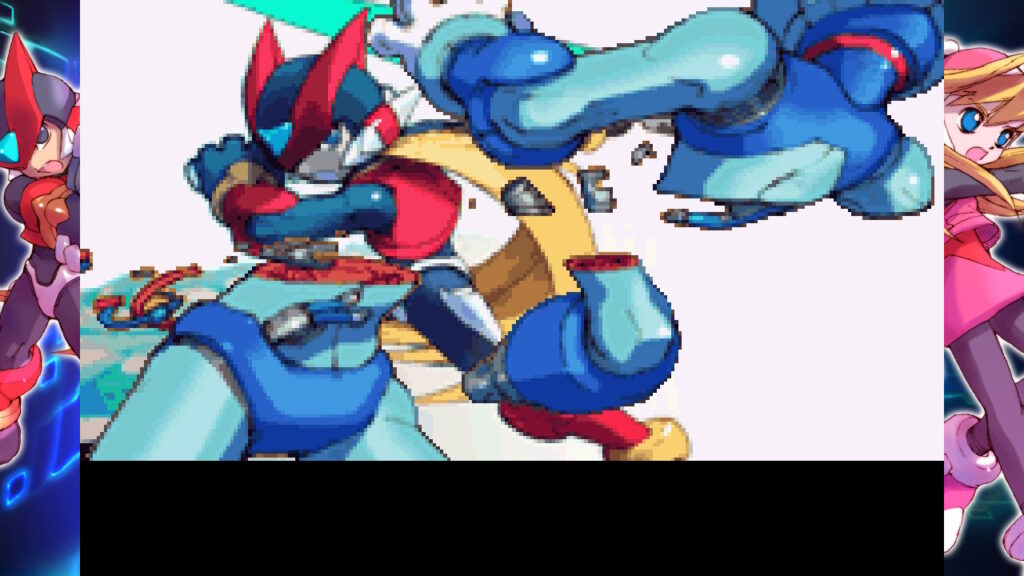
The limitations of the GBA show in the four Zero games, but ZX and ZX Advent were originally on Nintendo DS. The GBA entries tend to have very few frames of animation in their sprites, and have that overly bright pastel hue which was a result of compensating for console not being back lit.
Games on the DS did not have these restrictions, and as a result both ZX titles have a much richer pallet and more fluid sprite animation.
Capcom even remastered the original anime cutscenes to make them a clean and clear. Audio no longer has the restriction of the Nintendo DS speaker, and players can choose to relive the original low bit-rate sound quality in the options. The compilation also includes the original Japanese audio for purists; although it requires playing with Japanese text as well.
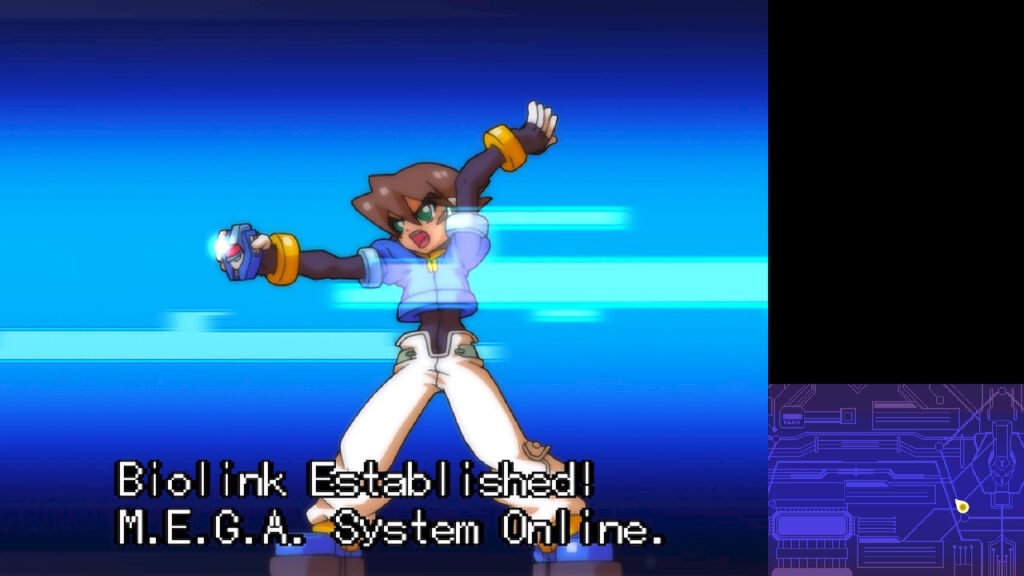
Some genius came up with a solution for the dual-screen design in ZX and ZX Advent. These were the kind of DS games that used the touch screen for utility purposes only.
Things like the map screen and item/weapon switch is done with the extra screen which has been tucked away in the extra screen space. The right stick is mapped to what would have been stylus functionality, and the set-up is effective and efficient.
Both ZX titles not only deliver more of the same high quality action as the Zero games, they also both have two different campaigns. This is an endless all-you-can-eat Mega Man buffet, but you keep eating despite being full, because you keep discovering things you want to try. It can be a daunting task to do it all at once, and it is best experienced by spreading the Zero and ZX games apart by a week or two.
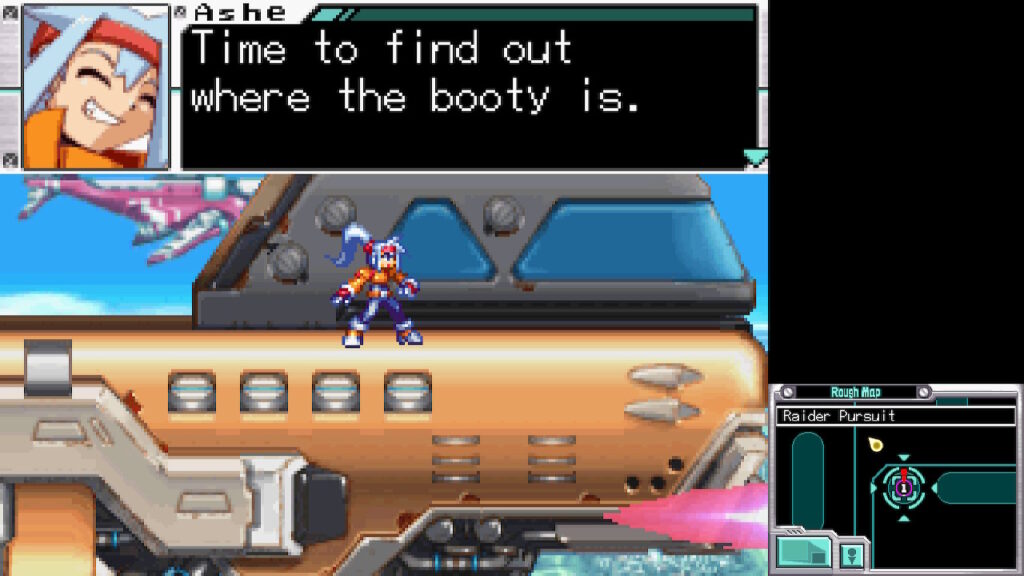
The control is as tight as can be with no discernible input latency across all titles in the compilation. Anyone who is acquainted with the originals might notice some pixel scaling irregularities when playing in pillar box format- the tell tale sign is always in the life bars.
Other things that just cannot be helped are the art stills used for cutscenes in the GBA games, which look like they were given too many passes through a filter, making the illustrations look blotchy and very rough.
The extras included in Mega Man Zero/ZX Legacy Collection is consistent with previous compilations. The usual suspects like art galleries, borders, and the music player are all present and accounted for; as well as bonus modes for added challenge.
Out of all of the Legacy Collections that Capcom has put out, this one stands the tallest for its consistency in quality titles; there is not a single weak link in this package.
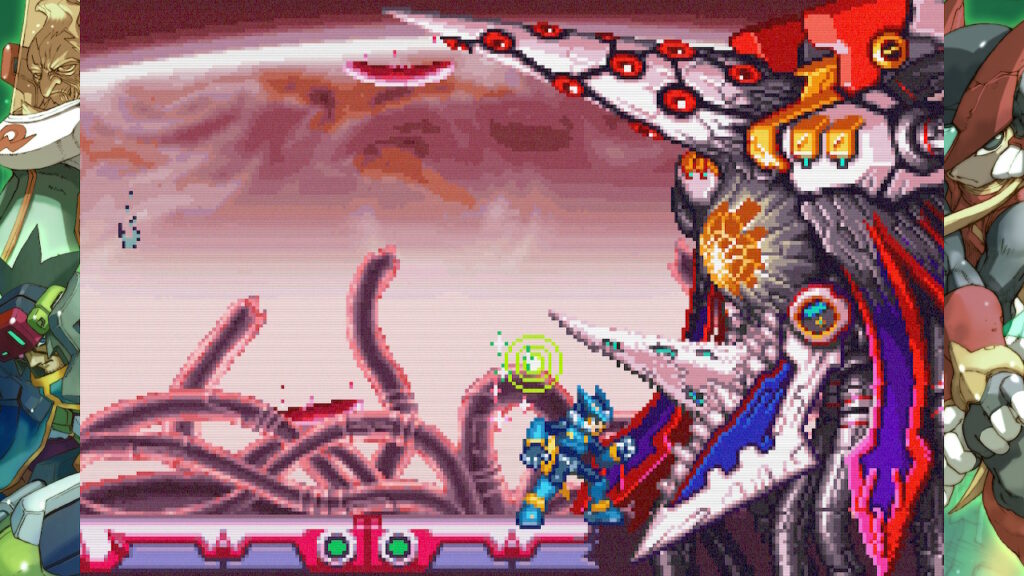
Aside from the nonlinear level design not adding much to the Mega Man formula, there really is not a whole lot going against anything in this collection. It is clear that Capcom took the criticisms towards the previous collections to heart, and addressed them all here. This is a much more polished product, with an indelible spread of work from Inti Creates.
With all the power-ups to acquire, items that can assist, and the extra casual modes added in, Mega Man Zero/ZX Legacy Collection is made more accessible than ever. Even the story, which is well worth the time to experience, has more thought put into it than anything seen before in Mega Man. Compounded with the easy settings, this is something that kids could get into and enjoy.
The heroes in these games are fun to play as because they are powerful, and being powerful is awe-inspiring. It is cathartic to cut robots in half with a laser sword, as chunky pixel art blurts out all over the floor. It is a satisfying challenge that is just not available anywhere else.
Mega Man Zero/ZX Legacy Collection was reviewed on Nintendo Switch using a personal copy obtained by the reviewer. You can find additional information about Niche Gamer’s review/ethics policy here.